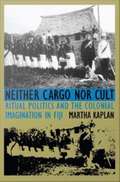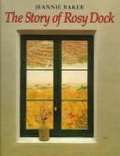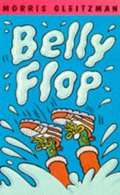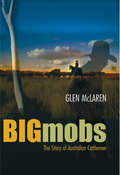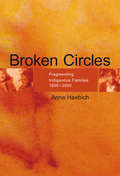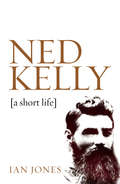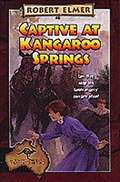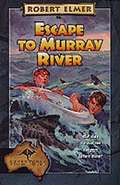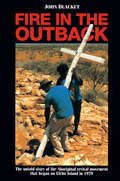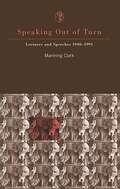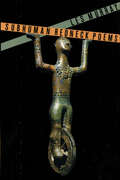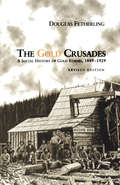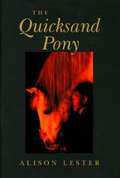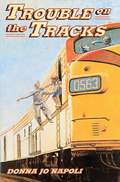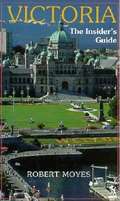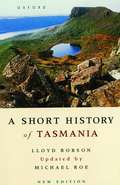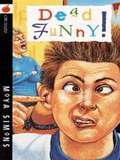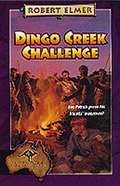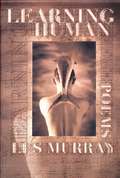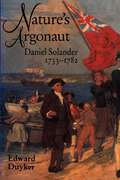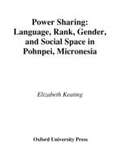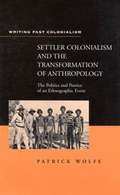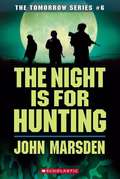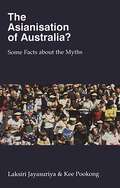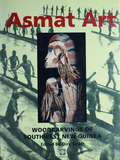- Table View
- List View
Neither Cargo Nor Cult
by Martha KaplanIn the 1880s an oracle priest, Navosavakadua, mobilized Fijians of the hinterlands against the encroachment of both Fijian chiefs and British colonizers. British officials called the movement the Tuka cult, imagining it as a contagious superstition that had to be stopped. Navosavakadua and many of his followers, deemed "dangerous and disaffected natives," were exiled. Scholars have since made Tuka the standard example of the Pacific cargo cult, describing it as a millenarian movement in which dispossessed islanders sought Western goods by magical means. In this study of colonial and postcolonial Fiji, Martha Kaplan examines the effects of narratives made real and traces a complex history that began neither as a search for cargo, nor as a cult. Engaging Fijian oral history and texts as well as colonial records, Kaplan resituates Tuka in the flow of indigenous Fijian history-making and rereads the archives for an ethnography of British colonizing power. Proposing neither unchanging indigenous culture nor the inevitable hegemony of colonial power, she describes the dialogic relationship between plural, contesting, and changing articulations of both Fijian and colonial culture. A remarkable enthnographic account of power and meaning, Neither Cargo nor Cult addresses compelling questions within anthropological theory. It will attract a wide audience among those interested in colonial and postcolonial societies, ritual and religious movements, hegemony and resistance, and the Pacific Islands.
The Story of Rosy Dock
by Jeannie BakerThe plant rosy dock is not native to Australia. A newcomer who settled in the desert area of central Australia planted it in her garden. After each rare period of rain the desert blossoms, and over the years the seeds of this plant have blown their way across south, central and western Australia. Full-color collage illustrations.
Belly Flop
by Morris GleitzmanMitch Weber believes there's only one way to stop everyone in town hating him. Become a champion diver. It's a risky plan, but Mitch also believes in a guardian angel called Doug. He hopes Doug is listening...
Big Mobs: The Story of Australian Cattlemen
by Glen MclarenPreviously overshadowed in the public imagination by notions of American cowboys and the wild west, Australian stockmen are given the place they so richly deserve in pastoral and Australian history in this insightful study. From the lonely months on a long cattle drive to the boots they wore and the places they lived in, the stockmen and their unique way of life is intelligently explored in this comprehensive work.
Broken Circles
by Anna HaebichThis major work reveals the dark heart of the history of the Stolen Generations in Australia. It shows that, from the earliest times of European colonization, Aboriginal Australians experienced the trauma of loss and separation, as their children were abducted, enslaved, institutionalized, and culturally remodeled. Providing a moving and comprehensive account of this tragic history, this study covers all Australian colonies, states, and territories. The analysis spans 200 years of white occupation and intervention, from the earliest seizure of Aboriginal children, through their systematic state removal and incarceration, and on to the harsh treatment of families under the assimilation policies of the 1950s and 1960s. The resistance struggle and achievements of Aboriginal people in defending their communities, regaining their rights and mending the broken circles of family life provides a compelling parallel story of determination and courage.
Ned Kelly: A Short Life
by Ian Jones'the best Kelly biography by a country mile' - The AustralianThe definitive biography of Ned Kelly - and a superb description of his times. A bestseller since it was first published, Ned Kelly: A Short Life is acknowledged as being the definitive biography. Ian Jones combines years of research into all the records of the era and exhaustive interviews with living descendants of those involved, to present a vivid and gripping account of one of Australia's most iconic figures. `It will probably stand as the definitive account of Kelly?s life and its meaning?a work of prodigious scholarship, vivid reportage and sharp analysis?the most detailed portrait of the outlaw ever written? - Rod Moran, West Australian`the definitive biographical work? - Dr John McQuilton, author of The Kelly Outbreak
Captive At Kangaroo Springs (Adventures Down Under #2)
by Robert ElmerBook 2 in the Adventures Down Under for middle-grade readers. Bushrangers take Patrick's sister hostage, then Patrick is captured. Can they find a way to stop the bounty hunters' terrible plan?
Escape to Murray River (Adventures Down Under #1)
by Robert ElmerBook 1 in the Adventures Down Under for middle-grade readers. Patrick McWaid's father is framed for a crime and sentenced to an Australian prison in the 1860s. But when their whole family arrives in Australia, Patrick's father has disappeared!
Fire in the Outback: The untold story of the Aboriginal revival movement that began on Elcho Island in 1979
by John Blacket'A real classic''Every Australian believer should read this book''Australian Aborigines are the most evangelised people in the world with the least developed Christian growth' [Ron Williams, Aboriginal pastor and elder] God took the outcasts - rejected and despised Australian Aborigines - and transformed whole communities in a few days, first on an island in north Australia, and later across the north, centre, west and east of Australia. This fire of revival transformed health, hygiene, attitude to work and education, and brought true reconciliation and love between families, clans and tribes that had been fighting for many generations. Fire in the Outback is the Aborigines' own stories of what happened. It is a very frank, exciting and balanced presentation that challenges our own lives as it looks at the roots, background and results of a revival that points the way for the future. This is the story of real community transformation that produced many of the next generation of indigenous leaders and prepared the way for Australia's first peoples to take their God-given role in real leadership in one of the most multi-cultural nations on earth.
Speaking Out Of Turn: Lectures and Speeches 1940–1991
by Manning ClarkThis fascinating book brings together forty-two selected speeches and lectures by Professor Manning Clark. They range over fifty years from 'What of Germany', delivered in 1940, to the last, delivered in 1991 just before his death at the launch of Barry Humphries' book The Life and Death of Sandy Stone and reveal recurring themes as well as developments in Clark's thinking. In one sense they are all of a piece. They reflect the values, aspirations, regrets-and laughter-of one passionate and intelligent man. In another, they change and develop during the course of that man's intellectual and emotional career. In early manhood he analysed issues and problems ruthlessly in terms of his own values. In middle life he portrayed men and women and expounded ideas from a historical perspective. Towards his end the elegiac mood prevailed and he sought-not always successfully-to speak as a 'life affirmer' and to regard all men and women and events with the 'eye of pity'.A History of Australia ,Volumes 1 & 2, Earliest Times - 1838, deals with the pre-white settlement era and the earliest years of European colonisation through to the establishment of an increasingly settled society and the expeditions of the great inland explorers.
Subhuman Redneck Poems
by Les MurrayIn this collection of poems, farmers, fathers, poverty-stricken pioneers, and people blackened by the grist of the sugar mills are exposed to the blazing midday sun of Murray's linguistic powers. Richly inventive, tenderly perceptive, and fiercely honest, these poems surprise and bare the human in all of us.
The Gold Crusades: A Social History of Gold Rushes, 1849-1929
by Douglas FetherlingAmong the hordes of starry-eyed 'argonauts' who flocked to the California gold rush of 1849 was an Australian named Edward Hargraves. He left America empty-handed, only to find gold in his own backyard. The result was the great Australian rush of the 1850s, which also attracted participants from around the world. A South African named P. J. Marais was one of them. Marais too returned home in defeat - only to set in motion the diamond and gold rushes that transformed southern Africa. And so it went. Most previous historians of the gold rushes have tended to view them as acts of spontaneous nationalism. Each country likes to see its own gold rush as the one that either shaped those that followed or epitomized all the rest. InThe Gold Crusades: A Social History of Gold Rushes, 1849-1929, Douglas Fetherling takes a different approach. Fetherling argues that the gold rushes in the United States, Canada, Australia, New Zealand, and South Africa shared the same causes and results, the same characters and characteristics. He posits that they were in fact a single discontinuous event, an expression of the British imperial experience and nineteenth-century liberalism. He does so with dash and style and with a sharp eye for the telling anecdote, the out-of-the-way document, and the bold connection between seemingly unrelated disciplines. Originally published by Macmillan of Canada, 1988.
The Quicksand Pony
by Alison Lester"Biddy, I'm sorry, we're going to have to leave her." "What?" Biddy struggles out of the quicksand. "You can't leave her! The tide's coming in. She'll drown!" But the pony is trapped and Biddy is forced to go on without her. The next day the only signs of Bella are hoof prints in the sand...with small footprints and the paw marks of a dog. Who has rescued Bella? Who could be so small and be alone on this remote beach? Biddy's search takes her into a wild secret country where she discovers the truth about a mysterious disappearance that happened many years ago.
Trouble on the Tracks
by Donna Jo NapoliWhile traveling across the Australian outback on a train, thirteen-year-old Zach and his younger sister, Eve, uncover an endangered bird-smuggling ring and try to save two trains from a full-speed collision.
Victoria: The Insider's Guide
by Robert MoyesAll the must-see, must-visit places in the beautiful "City of Gardens." Victoria, nestled jewel-like at the southern tip of Vancouver Island, offers a legion of transient pleasures to the visitor and more abiding satisfactions for permanent residents. Most immediately apparent is the superb setting. Bounded by water on three sides, with marine vistas that culminate in the snow-capped peaks of the Olympic Mountains across the Strait of Juan de Fuca, Victoria has grown up amidst a gently rolling landscape that never lacks for pastoral charm. With its balmy, Mediterranean climate, a pedestrian-oriented downtown whose nineteenth-century buildings are attractively built to a human scale, and a full range of sophisticated urban amenities, Victoria is the quintessential island retreat. The city can be a little bit smug, perhaps, but the locals are always eager to share their beautiful surroundings and easy-going lifestyle with tourists and recent arrivals alike.
A Short History of Tasmania
by Lloyd L. Robson Michael RoeThis is a concise and lively history of Tasmania from its earliest times to the late 1990s. It is also a case study of British colonization in Australia, tracing the rocky path from invasion to modernity, from the rigors of Van Dieman's Land to the Franklin Dam controversy. For this new edition, Michael Roe has added two new chapters which provide a history up to 1996.
Dead Funny! (Danny Thompson #4)
by Moya Simons"You're bright red on your front and your back is dead white. Your face looks like you've been caught in a brushfire and your lips have blisters on them. Other than that you're fine." This is not Dead Funny. This is not even slightly funny. Danny won't impress Mandy Miller looking like a flame grilled steak! But it is Dead Funny when baby Bub-Tub eats snobby Mrs Fedderpot's precious diamond ring. Or when Helen the Horrible's lips swell up like rubber rings before her big date. Or when Danny's family try to survive for all of 48 hours without TV! Danny Thompson gets lots to laugh about and a bit to cry about in this hilarious collection of stories about the trials and tribulations of a normal 12-year-old boy. All of the four books in the Danny Thompson series are in the Bookshare library and they're all some of the funniest books you'll ever read. Danny wants to get along in sixth grade as long as he doesn't have to work too hard. He wants to get along with his dribbling, leaky, baby sister as long as he doesn't have to smell her. He wants to get along with his friends, even some girls, as long as he doesn't embarrass himself. As hard as he tries to steer clear of trouble, Danny gets stuck in embarrassing messes every time he turns around. Don't miss the laughs in the Danny Thompson books including #1. Dead Meat, #2. Dead Average and #3. Dead worried.
Dingo Creek Challenge (Adventures Down Under #4)
by Robert ElmerBook 4 in the Adventures Down Under series for middle-grade readers. Patrick and Becky find themselves in the middle of a dangerous confrontation between the town troublemakers and the local aborigines. Can they win the battle?
Learning Human
by Les MurrayA bighearted selection from the inimitable Australian poet's diverse ten-book body of work Les Murray is one of the great poets of the English language, past, present, and future. Learning Human contains the poems he considers his best: 137 poems written since 1965, presented here in roughly chronological order, and including a dozen poems published for the first time in this book. Murray has distinguished between what he calls the "Narrowspeak" of ordinary affairs, of money and social position, of interest and calculation, and the "Wholespeak" of life in its fullness, of real religion, and of poetry. Poetry, he proposes, is the most human of activities, partaking of reason, the dream, and the dance all at once -- "the whole simultaneous gamut of reasoning, envisioning, feeling, and vibrating we go through when we are really taken up with some matter, and out of which we may act on it. We are not just thinking about whatever it may be, but savouring it and experiencing it and wrestling with it in the ghostly sympathy of our muscles. We are alive at full stretch towards it." He explains: "Poetry models the fullness of life, and also gives its objects presence. Like prayer, it pulls all the motions of our life and being into a concentrated true attentiveness to which God might speak." The poems gathered here give us a poet who is altogether alive and at full stretch toward experience. Learning Human, an ideal introduction to Les Murray's poetry, suggests the variety, the intensity, and the generosity of this great poet's work so far.
Nature's Argonaut: Daniel Solander 1733-1782
by Edward DuykerNature's Argonaut is the first full biography of this important eighteenth-century naturalist who not only circled the globe under sail but ranged as far north as the Arctic and as far south as Tierra del Fuego. Edward Duyker pays particular attention to Solander's role as a naturalist on the Endeavour during the ship's voyage along the east coast of Australia and to his pioneering contribution to the scientific study of the new continent. The author has also provided a comprehensive account of Solander's life and his contribution to the foundations of modern plant and animal taxonomy. The life of Daniel Solander, stamped with the enquiring spirit of the Enlightenment, is one of the grand adventures of the eighteenth century. Aside from the historic Endeavour voyage, Solander's Arctic travels, his involvement in industrial espionage in England on behalf of Sweden, his thwarted love for the daughter of his mentor Linnaeus and his friendships with such men as Joseph Banks, James Cook, Samuel Johnson, Matthew Boulton and Benjamin Franklin make Solander an exciting biographical subject.
Power Sharing: Language, Rank, Gender and Social Space in Pohnpei, Micronesia
by Elizabeth KeatingLinguistic anthropologist Elizabeth Keating went to the island of Pohnpei, in Micronesia, and studied how people use language and other semiotic codes to reproduce and manipulate status differences.
Settler Colonialism And The Transformation Of Anthropology: The Politics And Poetics Of An Ethnographic Event (Writing Past Colonialism)
by Patrick WolfeThis work analyzes the politics of anthropological knowledge from critical perspective that alters existing understandings of colonialism. At the same time, it produces insights into the history of anthropology. Organized around an historical reconstruction of the great anthropological controversy over doctrines of virgin birth, the book argues that the allegation a great deal about European colonial discourse and little if anything about indigenous beliefs. By means of an Australian example, the book shows not only that the alleged ignorance was an artifact of the anthropological theory that produced it, but also that the anthropology was an artifact of the anthropological theory that produced it, but also that the anthropology concerned has been closely tied into both the historical dispossession and the continuing oppression of native peoples. The author explores the links between metropolitan anthropological theory and local colonial politics from the 19th century up to the present, settler colonialism, and the ideological and sexual regimes that characterize it.
The Night Is for Hunting (The Tomorrow Series #6)
by John MarsdenAmidst a brutal war with no end in sight, Ellie and her four remaining friends discover that their hidden refuge becomes a crowded place when they decide to care for an uncooperative crew of orphans. Things only get worse when Ellie and Homer learn that mysterious visitors have discovered their sanctuary. Has the enemy found them out? Five ordinary teens brave the worst in this electrifying continuation of their battle to stay safe and sane in a war zone that was once their home.
Asianisation Of Australia?: Some Facts about the Myths
by Kee Pookong Laksiri Jayasuriya'. . . we must combat blind ignorance with fact, and unreason with reason, and that is what this book is about.' Don Dunstan Pauline Hanson was not the first person to sensationalise the effects of Australia's open immigration policy on the racial make-up of this country. Nor was she the first politician to see advantage in building on the fear and prejudice beneath the surface of Australia's multicultural society. For the end of the White Australia policy in 1973 did not spell the end of fear of a peaceful Asian invasion through immigration. The Asianisation of Australia? contributes the dispassionate, independent and objective comment that has been missing from media debate on the effects of our immigration policies. It provides a wealth of data on the make-up of Australia's immigrant intake and the ability of immigrants to establish a place in their new country. Recent political rhetoric and forecasts are exposed for the myths, prejudices and over-simplifications that they are. By comparing such indicators as rates of employment, income, childbirth, intermarriage and fluency in English between Asian and other immigrants, Professors Jayasuriya and Kee convincingly demonstrate the valuable contribution made by Asian immigrants to our culture and our economy.
Asmat Art
by Dirk SmidtThis book presents a full range of Asmat woodcarving art, but emphasizes the rare early shields and figure sculptures in the collection of the Rijksmuseum voor Volkenkunde, the National Museum of Ethnology in Leiden. Drums, canoeprowheads and the larger, more dramatic "objects" are also shown. * Together with bisj poles, war shields are perhaps the most famous creation of Asmat artists, and these were carved throughout the region. It is in the design and construction of the shields that the variations in style region can most clearly be seen. Figure sculptures, of varying styles, are also well represented here, and a limited number of the huge ceremonial carvings, such as bisj poles and basu suangkus, have also been included. The cultural context in which these items play their part is described in detail in the introductory chapters. But it is not the intention of this book to be an ethnography. The focus is on the art pieces themselves.
